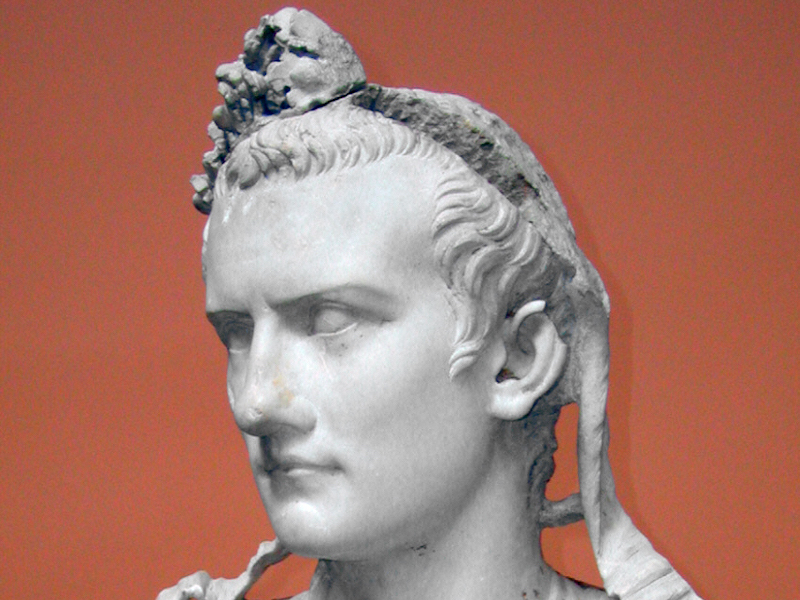Caligula: A Big Fan of Horses But Not So Disposed Toward Goats
Episode #4 of the course The mad world of the Roman emperors by James Wareing
Today, we will learn about the emperor Caligula, who despite only ruling for less than four years, is one of the most infamous of the Roman emperors. Mentally ill, extravagant, yet very popular with his people, his reign was incredibly eventful. Caligula was the third Roman emperor and is renowned for being one of the more colorful characters. He was the great-grandson of Augustus and began his reign aged 24 in AD 37. His physical characteristics were mocked for being rather goat-like to such an extent, he made it an offense punishable by death to mention a goat in his presence. Cassius Dio recounts his love of dressing up in women’s clothing and extravagant wigs, undermining the image of an emperor.
Caligula the Roman Populist
His initial policy was typical of what we would understand populists using today. He immediately undertook to recall all exiles and abolish sales tax, which gained him popularity with the people. He put on lavish theatrical and gladiatorial shows and enriched the military (whose support was vital for any emperor) with bonuses. He further endeared himself to the people with extravagant spending on aqueducts, theaters, and even a floating bridge across the Bay of Bauli so he could ride his horse across it.
He embodied the corrupting powers of the elite. Suetonius describes how he would often dictate that he had “the right to do anything to anybody.” He was not trusting of the senate, and Suetonius suggests that he was intending to make his horse a consul as a way of undermining the senate.
He is also alleged to have committed incest with his three sisters before endowing them with the public honor of being included in the soldiers’ oath of allegiance. However, as so often with fortune in imperial Rome, it was short-lived for the sisters, as one died and two were exiled for an alleged conspiracy against Caligula.
Illness and the Onset of Madness
Caligula had just recovered from an illness after he began his reign, and this led to him becoming increasingly mad and erratic in his decision making. Historians have suggested epilepsy as a potential diagnosis, as he had a tendency for seizures. It was common when a commander was celebrating a triumph for a slave to whisper in his ears, “memento mori” (“remember that you are a mortal”), to manage their ego. Such words clearly became lost on Caligula, who began to not only compare himself to the gods but also attest that he was a god, both in private and among senators. He even went so far as to have the heads of gods removed from certain statues and replaced with his own, as well as building a bridge between his palace and the temple of Jupiter.
His Death and Legacy
The Roman elite soon became outraged at the more deluded and outrageous actions of their emperor, with money quickly running out. A member of the Praetorian Guard by the name of Cassius Chaerea devised a plot to attack Caligula. Less than four years into his eventful reign, he was stabbed multiple times. Cassius Dio dryly adds that at this moment, he “learned by actual experience that he was not a god.” Although he was outrageous, the people, however, were less pleased with the assassination of their emperor. After all, he had provided many extravagant benefits for them during his reign. As a result, when Claudius succeeded him as emperor, he succumbed to public pressure to put to death all those involved in the plot.
Tomorrow, we will learn about the unlikely candidate who succeeded Caligula, and while many things changed for Roman emperors, just as many stayed the same.
Learn Something New Every Day
Get smarter with 10-day courses delivered in easy-to-digest emails every morning. Join over 400,000 lifelong learners today!
Recommended book
Share with friends

